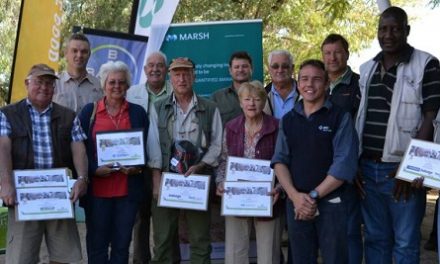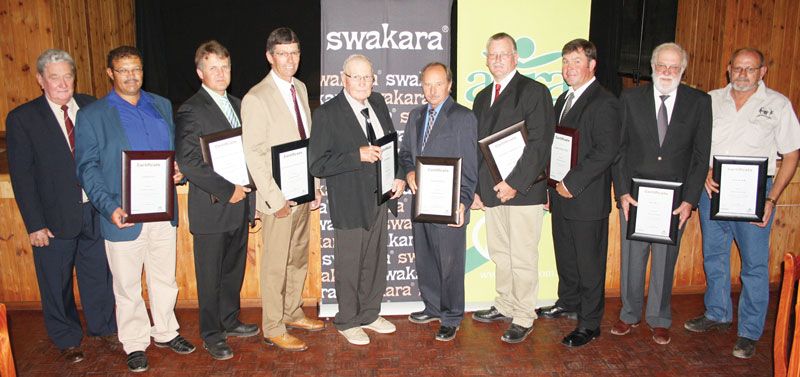
Regional stakeholders’ dialogue strengthens conservation agriculture awareness

Representatives from 10 southern African countries recently gathered in Maputo for the annual Conservation Agriculture Regional Working Group (CARWG) dialogue under the umbrella of the Food and Agriculture Organization of the United Nations (FAO) and the FVC/Norwegian Agency for Development Cooperation funded project “Strengthening Coordination, Scaling Up and Governance of Conservation Agriculture in Southern Africa (SUCASA)”.
The primary objective of the dialogue was to heighten awareness of the significance of Conservation
Agriculture (CA) in contributing to food security in Southern Africa. The dialogue facilitated the sharing of knowledge, best practices, and science-based innovations for increased productivity, production, and climate resilience of smallholder farmers.
This collaborative effort under CARWG came in the backdrop of El Niño predictions casting a shadow over Southern Africa, foreseeing a potential drought during the upcoming 2023/24 production season, which could further exacerbate the already high number of people facing acute food insecurity in the region.
According to data by the Southern Africa Development Community (SADC), the region currently faces a staggering 57.5 million individuals grappling with food and nutrition insecurity, a significant increase from around 14 million merely a decade ago.
“This CARWG dialogue comes at a critical time when the whole world is discussing how to keep food systems sustainable in the face of the accelerated impact of climate change and other exogenous shocks,” noted Jose Luis Fernandez, FAO Representative (FAOR) in Mozambique.
Fernandez highlighted that productivity and production among small-scale farmers have been declining for decades, raising significant concerns. This decline has translated into increased food and nutrition insecurity across the Southern African region.
The FAOR further underscored the urgent need for governments and other key stakeholders to take decisive action and address the challenges posed by climate change and other external shocks to food systems if we are to achieve the Sustainable Development Goals.
“We should move towards a food systems trajectory different from the current one that has failed us. We cannot expect different results by doing the same things repeatedly,” he emphasised.
The 2014 CAADP-Malabo declaration by African Heads of State emphasises climate-smart agriculture’s adoption, urging enhanced climate resilience for smallholder farmers. The declaration sets a goal to reach 25 million farmers with climate-resilient practices like CA by 2025, reflecting a shared concern for regional agricultural sustainability.
“Climate resilience is paramount, especially within the context of our smallholder farmers. This [CARWG] dialogue represents a significant step towards building that resilience,” asserted Saidi Mkomwa, Chairperson, CARWG.
Conservation Agriculture (CA) serves as a key strategy for expanding climate-smart agriculture, particularly in mitigating water stress during droughts. However, CA’s uptake by small-scale farmers in Southern Africa faces various obstacles such as insufficient equipment, limited awareness, inadequate training of Extension agents and farmers, and weak integration into value chains.
“The main aim of the SUCASA project is to support collective efforts to accelerate the scaling-up of CA among smallholder farmers in Southern Africa,” said Sina Luchen, FAO Regional Emergency and Resilience Agronomist.
Luchen further highlighted that the SUCASA project is working to achieve the increased adoption of CA in beneficiary countries by supporting the National Conservation Agriculture Taskforces (NCATFs) and the CARWG to promote CA to decision-makers and stimulate further investment in the climate resilient approach.
During the dialogue, stakeholders widely agreed that mechanisation plays a pivotal role in expanding the reach of CA, noting that it brings forth efficiency, timeliness, and precision in critical tasks such as soil preparation, planting, and harvesting, thereby reducing the physical labour required.
“Making mechanisation a core element of expanding CA is crucial, as it can improve labour efficiency for smallholder farmers, particularly women and youth who are heavily engaged in agriculture. Our focus should therefore be on empowering them to access and master the utilisation of diverse machinery,” stressed Cliff Dlamini, Executive Director, the Centre for Coordination Agricultural Research and Development in Southern Africa (CARDESA).
According to Dlamini, mechanization will not only accelerate the adoption of conservation agriculture practices but also enhance productivity and resource management. This sentiment was further echoed by Mkomwa, who noted, “Without investment in agricultural mechanisation, it is difficult to cultivate the 60 percent arable land in the [Southern Africa] region.”
The CARWG dialogue aimed to bridge gaps in the adoption of CA by facilitating knowledge sharing,
dissemination of best practices, and exchange of science-based innovations, all to boost
productivity, production, and climate resilience within the agricultural sector in Southern Africa.
SADC member states, namely the Democratic Republic of the Congo, Eswatini, Lesotho, Madagascar, Malawi, Mozambique, Namibia, South Africa, Tanzania, Zambia, and Zimbabwe, all presented their country-level reports on the milestones achieved under the FVC/NORAD-funded SUCASA project.
The regional dialogue represents a milestone in fortifying the region’s agriculture sector amidst changing climatic conditions. Through collaboration, knowledge dissemination, and embracing innovative approaches, stakeholders are setting the stage for a sustainable and resilient future for Southern Africa.












































